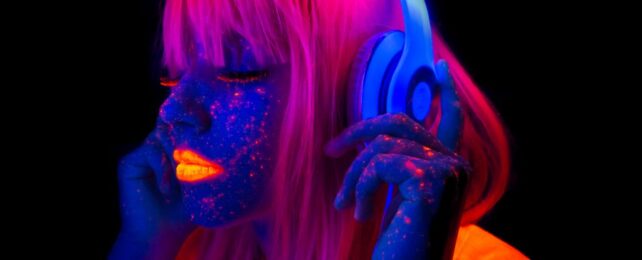A new analysis of thousands of sets of twins suggests that synesthesia shares genetic roots with autism.
In particular, synesthesia seems to be linked to what are known as non-social autism traits, or repetitive and restricted behaviors and interests (RRBIs) – which have also been linked to differences in perception compared to non-autistic individuals.
"Our study suggests that the link between synesthesia and autism might reside in shared genetic causes, related to non-social autistic traits such as alterations in perception," write a team led by psychiatric epidemiologist Mark Taylor of the Karolinska Institute in Sweden.
"Future studies building on these findings may attempt to identify specific groups of genes that influence both autism, synesthesia and perception."
Synesthesia is a phenomenon whereby sensory stimuli trigger an additional sensory effect, such as phantom flavors that appear on hearing a specific word. Autism, on the other hand, is the name given to a suite of traits and behaviors that affect social interaction, behavior, and the senses.
Previous research has found that there is quite a lot of crossover between people with autism and people with synesthesia. Those with autism are more likely to have synesthetic experiences; and people with synesthesia are more likely to have autistic traits.
This has led scientists to suppose that there might be a link between them; but, since we don't know what causes either autism or synesthesia, it's not clear what that link might be.
However, synesthesia seems to run in families; and not just synesthesia, but specific types of synesthesia. For example, grapheme-color synesthesia – associating letters or numbers with colors – can be found more often in both members of a pair of identical twins than non-identical twins, suggesting a genetic component.
Taylor and his colleagues wanted to investigate this potential link in an attempt to determine the genetic and environmental contributions to synesthesia, and how that affects its covariance with autism.
One of the best tools available for this kind of analysis is a twin study. Since identical twins are as genetically similar as two individuals can be, studying them can help reveal genetic contributions to specific traits.
The researchers examined 2,131 pairs of twins – 4,262 individuals in all – aged 18 who are participating in Sweden's Child and Adolescent Twin Study in Sweden. These individuals are tasked with filling out comprehensive surveys over time, including an assessment of autistic traits, and synesthesia screening, for eight types of synesthesia.
These twins consisted of 658 identical twin pairs (413 female, 245 male), 765 same-sex non-identical twin pairs (490 female, 275 male) and 708 opposite-sex non-identical twin pairs. The researchers found that identical twins were more likely to report similar synesthetic experiences than non-identical twins, suggesting that genes play a role in synesthesia and how it presents.
However, environmental factors played a pretty significant role too, especially for grapheme-colour synesthesia, which was sometimes experienced only by one twin of a pair.
The researchers also found that synesthesia was strongly linked to RRBI autistic traits, such as a high level of focus in specific interests or routines, and repetitive physical movements. This association, the researchers found, seemed to have a much stronger genetic link than that found between synesthetic traits.
"We found individual differences in self-reported synesthesia to be heritable and to be associated with autistic traits … while this association seemed to be under strong genetic influence. We also found evidence for environmental factors not shared by twins to influence individual differences in synesthesia and to some extent also its association with autistic traits," the researchers write.
"We hope that our findings will inspire future research on environmental factors influencing synesthesia, the shared genetic mechanisms of autism and synesthesia, and the specific behavioral features shared between the two phenomena."
The research has been published in Proceedings of the Royal Society B: Biological Sciences.
